 Overview
Overview
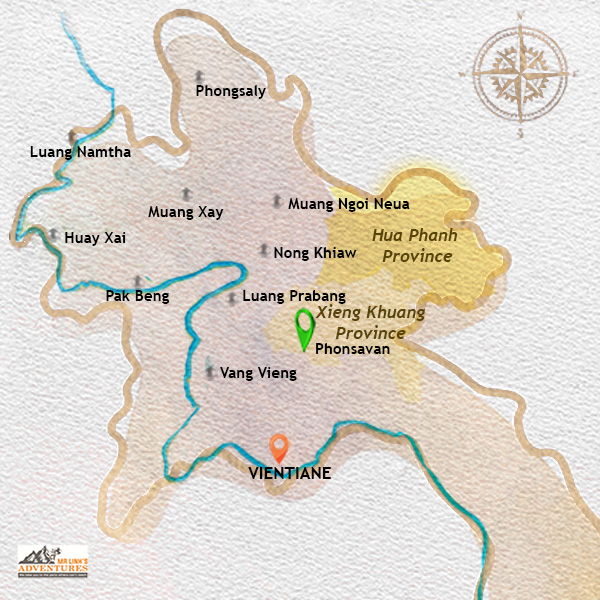
The provinces of
Xieng Khuang and
Hua Phan, located in northeastern Laos on the Vietnam border, are off-the-beaten-path destinations ideal for travelers seeking adventure and authentic discoveries.
These mountainous, sparsely populated regions offer spectacular scenery, rich local culture, and fascinating history. Xieng Khuang is particularly known for the mysterious Plain of Jars, while Hua Phan is home to the impressive Vieng Xai Caves. As for Sam Neua, the provincial capital of Hua Phan, it is one of the least visited cities in Laos, but offers a total immersion in local life.
Although marked by the conflicts of the Indochina War, these regions have risen from the ashes. The cities, rebuilt after American bombings, have a functional appearance. However, it is above all the surrounding nature that attracts travelers.
Thanks to a pleasant climate throughout the year, Xieng Khuang and Hua Phan are ideal destinations for travelers seeking adventure and off-the-beaten-path discoveries.
 Top Attractions
Top Attractions
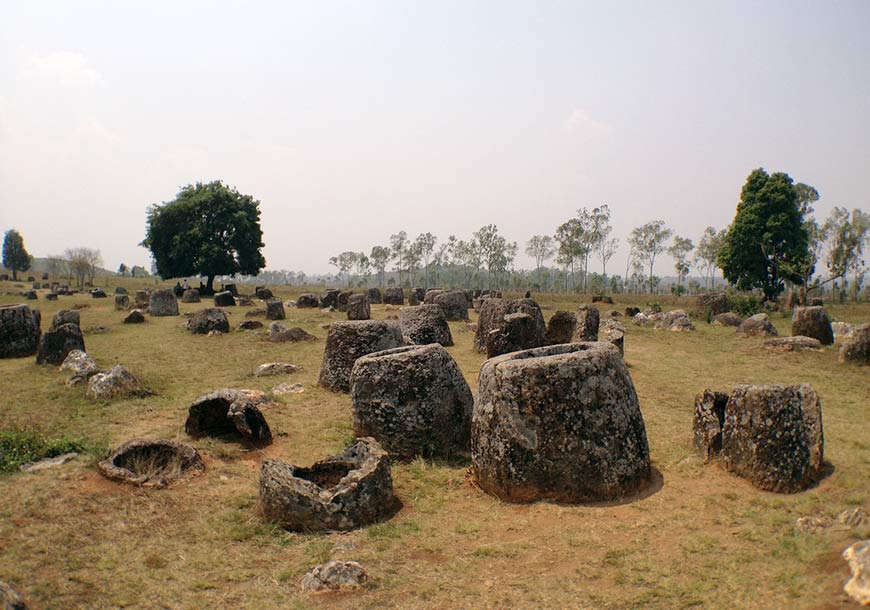 The famous and mysterious plain of Jars
The famous and mysterious plain of Jars
Laos, a landlocked gem in Southeast Asia, beckons travelers with its serene landscapes, rich history, and captivating culture. Among its many wonders are some truly unmissable sights that offer a unique window into the country's past and present.
The Plain of Jars
Stepping onto the Plain of Jars feels like entering an enigma wrapped in history. This extraordinary archaeological site, recognized as
a UNESCO World Heritage Site, is scattered with thousands of mysterious stone jars. These megalithic vessels vary significantly in size, from small bowls to imposing structures weighing several tons. Their age is estimated to span millennia, and while various theories abound, their exact origin and purpose remain a captivating mystery, fueling the imagination of all who visit. Exploring this unique landscape offers a truly unforgettable experience.
The Vieng Xai Caves
Delve into a significant chapter of Laotian history at the Vieng Xai Caves. This intricate network of limestone caves served as a hidden city and crucial headquarters for the Pathet Lao during the Vietnam War. Venturing into these caves reveals a fascinating story of resilience and ingenuity, with former living quarters, meeting rooms, and even a hospital remarkably preserved within the natural formations. A visit here provides a profound glimpse into Laos's pivotal role in the Indochina Wars.
Local Culture
To truly experience the heart of Laos, immerse yourself in its vibrant local culture. Opportunities abound to connect with local communities and witness their time-honored traditions firsthand. Discover intricate crafts passed down through generations, savor the distinct flavors of Laotian cuisine, and learn about the unique customs that shape daily life. Whether participating in a traditional ceremony, visiting a local market, or simply sharing a meal with a family, these interactions offer invaluable insights into the soul of Laos.
Natural Landscapes
For nature enthusiasts, Laos is a paradise waiting to be explored. Beyond its historical and cultural treasures, the country boasts breathtaking natural beauty. Embark on invigorating hikes through verdant mountains, lose yourself in the tranquility of lush forests teeming with life, and discover the refreshing cascade of stunning waterfalls. From the majestic Mekong River to the serene countryside, Laos's natural landscapes offer a sense of peace and adventure.
 See & Do
See & Do
Phonsavan, the capital of Xieng Khuang, is an ideal starting point for exploring the province and the neighboring region of Hua Phan. Rebuilt in the late 1970s after the destruction of the old capital during the Indochina Wars, Phonsavan exudes a functional charm. Its main street, winding like a spaghetti western set (minus the tumbleweeds), offers a glimpse into the city's spirit of resistance. Although not a bustling metropolis, Phonsavan provides a convenient and authentic base for discovering the region's true treasures: its natural beauty and rich history.
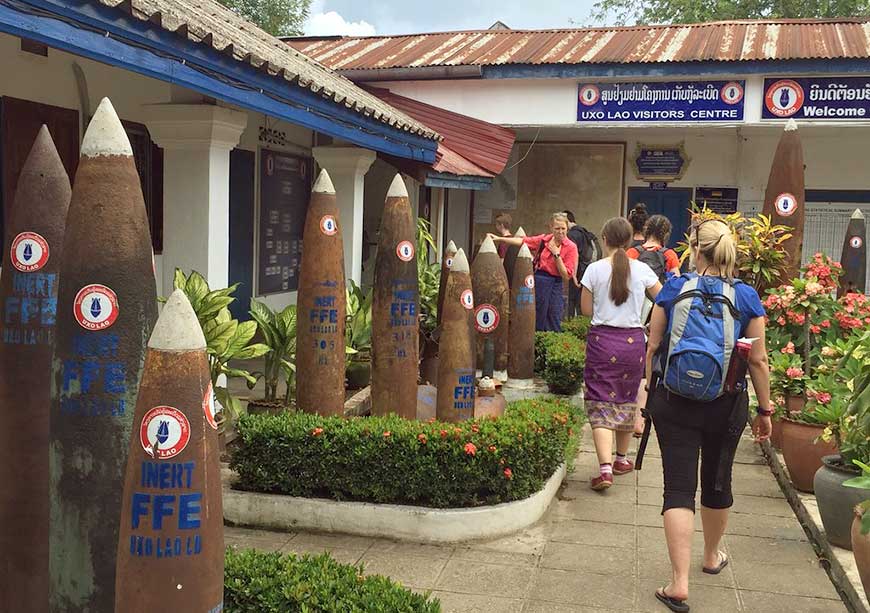 The UXO Lao Visitor Center is a poignant historical museum
The UXO Lao Visitor Center is a poignant historical museum
The Unexploded Ordnance (UXO) Information Center in Phonsavan, run by a British association, provides a poignant testimony to the devastation caused by the bombings during the Indochina War. You can see vestiges of this war, understand the extent of the destruction, and attend screenings of poignant documentaries such as "Bomb Harvest," "Surviving the Peace," and "Bombies." These films, while upsetting, highlight the ongoing struggle represented by these unexploded munitions, still present in the Lao landscape.
The Tham Piu Cave, a tragic refuge during the war, recalls the dark hours of the past. In 1969, a devastating attack cost the lives of 374 people who had taken refuge there. Today, the place offers a striking contrast between the natural beauty of the cave and the poignant memory of this tragedy.
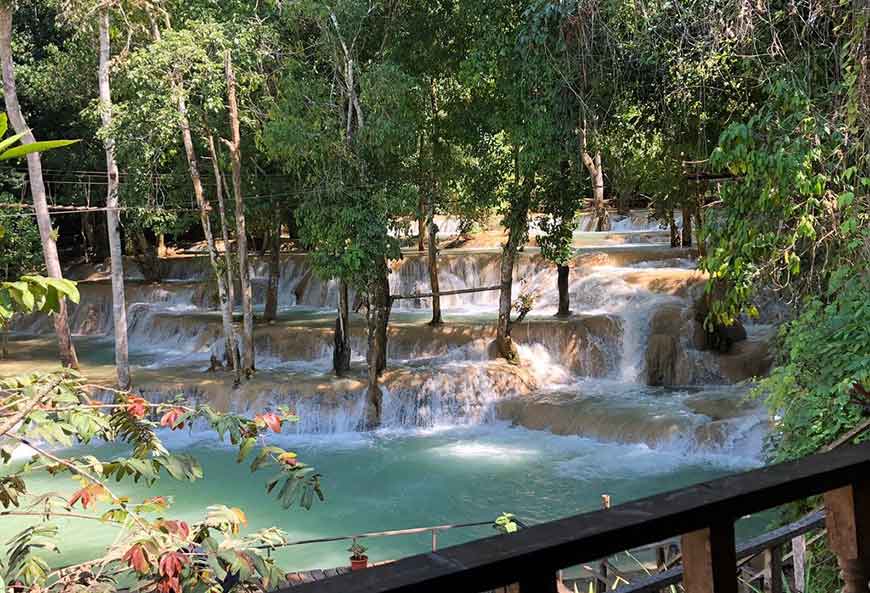 Kuang Si is not the only waterfall in Laos!
Kuang Si is not the only waterfall in Laos!
Fortunately, the region also offers enchanting natural sites, where beauty rivals history. The Tad Ka and Tad Lang waterfalls, with their clear waters cascading down several levels, invite relaxation. Near Muang Kham, the hot springs, although too hot for swimming, offer an impressive natural spectacle.
Further north, Vieng Thong, a modest town, serves as the gateway to the magnificent Nam Et/Phou Louey National Park. This sanctuary of wild nature is a must-see in northern Laos.
The park is home to exceptional wildlife, where Asian golden cats, gibbons, and river otters roam freely. Although tigers, which once gave the town its name ("Muang Hiam" meaning "Beware" in the Tai Daeng language), have become rare, the park remains a privileged place for wildlife observation.
Multi-day hikes and night safaris are offered to explore the riches of this natural jewel, offering a unique experience in the heart of Lao biodiversity.
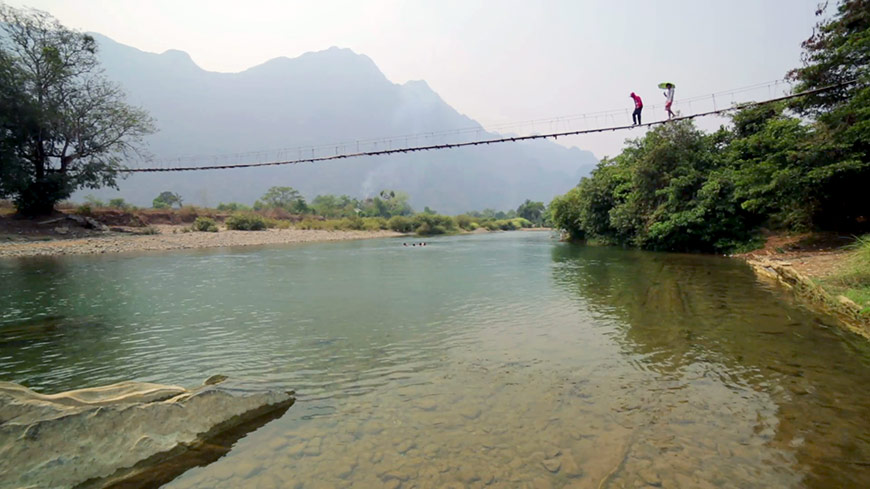 Enjoying a breathtaking view of the river
Enjoying a breathtaking view of the river
Sam Neua, the capital of Hua Phan province, evokes a bygone era with its Soviet-style architecture and austere communist monuments. The least visited city in Laos, it offers an off-the-beaten-path experience. Its strange Suan Keo Lak Meung monument, with its four concrete pincers supporting a glittering disco ball, contrasts in an unusual way with the surrounding communist decor. On the other hand, a walk on the suspension bridge offers a breathtaking view of the river. The city is also an ideal starting point for exploring the Vieng Xai Caves, an underground complex that served as a base for the Pathet Lao and sheltered up to 20,000 people during the war. These caves, veritable "hidden cities," bear witness to an important page in the history of Laos.
 Go Green
Go Green
Mr. Linh's Adventures offers multi-day tours in the provinces of Xieng Khuang and Hua Phan, combining the discovery of must-see sites, outdoor activities, and encounters with local communities. The itineraries are designed to offer an authentic and immersive experience, far from the beaten path.
 Heritage
Heritage
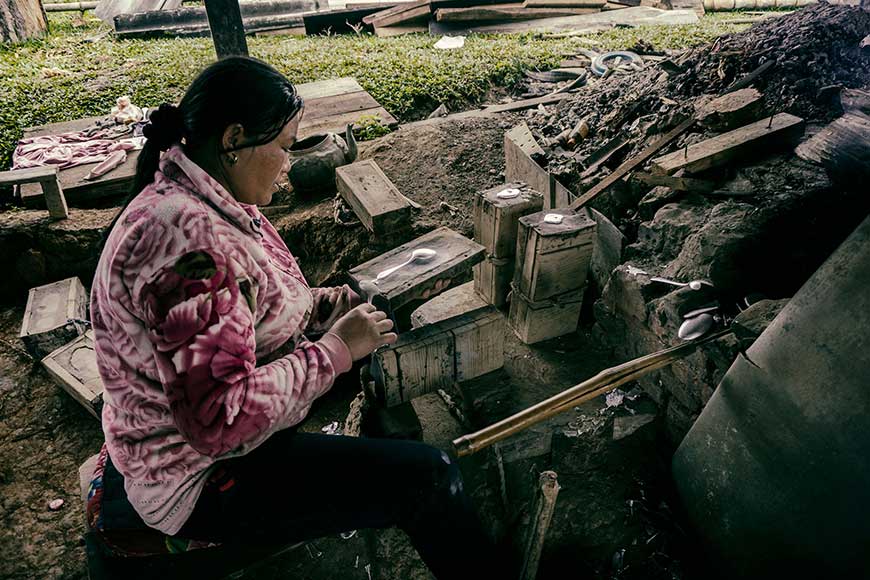 Ban Naphia, the "Spoon Village"
Ban Naphia, the "Spoon Village"
Beyond Phonsavan, a landscape of green hills and pine forests reveals the region's true treasure: the mysterious Plain of Jars.
This unique site, a witness to a distant era, is home to thousands of giant stone jars, whose origin and exact function remain a mystery. Although some have disappeared, about 2,500 remain, defying time and past conflicts.
Sites 1, 2, and 3 are the most impressive, with Site 1 housing the largest jar, the majestic Hai Jeuam, weighing nearly 6 tons.
Despite the scars of war, the Plain of Jars offers a striking spectacle and testifies to the region's rich historical and cultural heritage.
30 km south of Phonsavan, the village of Ban Naphia, also known as "Spoon Village," offers a fascinating dive into Phuan culture.
The inhabitants of this village perpetuate a unique know-how: the manufacture of aluminum objects, notably spoons and other silverware, from deactivated munitions dating from the Indochina Wars.
During your visit, you can admire these original creations, learn more about the manufacturing process, and exchange with the villagers about their way of life.
The Hua Phan region, of exceptional cultural richness, is home to a mosaic of ethnic groups, such as the Hmong, the Phuan, the Khmu, and the Tai Dam.
This diversity is reflected in local life, particularly in Sam Neua, where the markets offer a living glimpse of the crafts, traditional costumes, and local products of these different communities.
 Food & Drinks
Food & Drinks
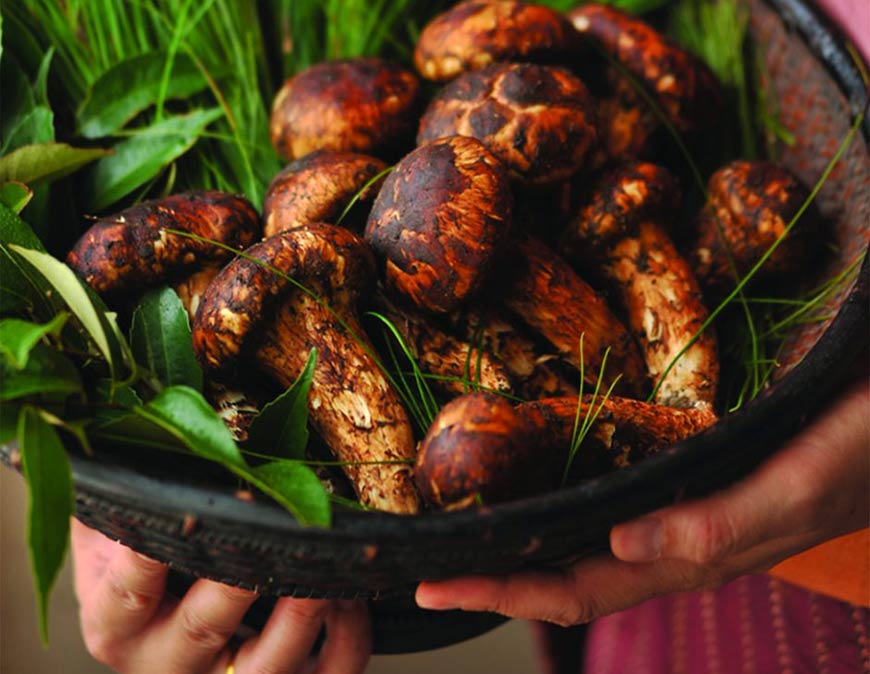 Matsutake Mushroom (Het Wai) in Lao is the most prized and expensive mushroom in Laos
Matsutake Mushroom (Het Wai) in Lao is the most prized and expensive mushroom in Laos
Strolling through the markets of Sam Neua is an authentic and enriching experience, a privileged encounter with the diversity and vitality of local culture.
But it is perhaps the food market that is most captivating. Here you can discover a variety of local ingredients, from the most common to the most unusual: freshly prepared field rats, seasonal meats and vegetables, banana leaves stuffed with insects... A true invitation to discover the flavors and culinary traditions of the region.
Thanks to its cool climate and altitude, the Xieng Khuang and Hua Phan region offers a unique gastronomy, with rare products that are even impossible to find in the rest of Laos.
Among these culinary treasures, the famous Matsutake mushrooms, prized throughout the world, are enjoyed here in tasty dishes or infused in Lao-Lao, the local whiskey.
Considered an expensive luxury elsewhere, these mushrooms abound in the region's pine forests, offering an authentic and surprising taste experience.
The Xieng Khuang and Hua Phan region is also surprising for its unusual culinary specialties, such as "Nok Ann Toong," or "sour swallow."
From August to September, migratory swallows from Siberia stop in the region, where they are captured and then prepared according to a traditional method.
After a fermentation process, the birds are fried or cooked in a stew, often whole and without feathers.
 Directions
Directions
Location
The provinces of Xieng Khuang and Hua Phan are located in northeastern Laos, on the border with Vietnam.
How to get there
You can reach these provinces by bus from Vientiane or by plane from Hanoi. Ticket prices vary depending on the company and the season.
Best season
The best season to visit these provinces is from November to February, during the dry season, when temperatures are pleasant and the sky is sunny.